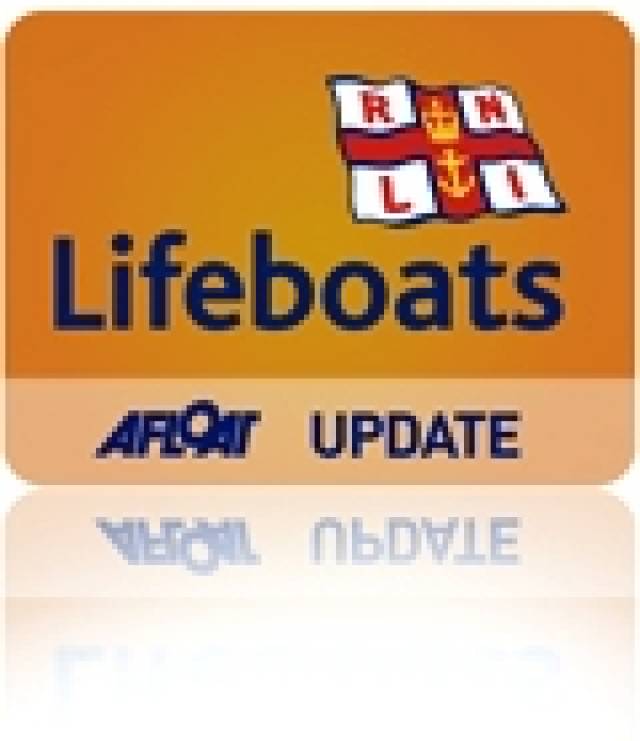#RNLI - Holyhead RNLI volunteers are coming together to mark the 10th anniversary of their all-weather lifeboat that safeguards waters familiar to many an Irish ferry passenger.
To celebrate the milestone, the volunteer RNLI crew have commissioned a decorative bell paying tribute to each volunteer who has served aboard Christopher Pearce.
The bell will be unveiled to the volunteer crew who will also receive an anniversary glass this Wednesday 18 December.
Launching 205 times since entering service at Holyhead, Christopher Pearce - the only Severn class lifeboat of her kind in Wales - has rescued 307 people.
A total of those 11 people rescued owe their lives to the volunteer crew and would not be celebrating Christmas this year had Christopher Pearce not come to their rescue.
The vessel – which is named after Christopher Pearce, who bequeathed the money before his death in 1997 – has seen some unique, challenging and difficult rescues during its 10 years on station.
In 2006 the all-weather lifeboat saw some of its most unusual rescues. A swan-shaped pedalo drifting in a busy shipping lane 25 miles out to sea required their assistance during the summer.
Then two young Irish men who stole a fishing trawler to sail home across the Irish Sea after missing the last ferry required their assistance after sailing in circles around the Anglesey coast.
In 2007, the all-weather lifeboat was launched to the large vessel Smitt Cymran which had hit rocks and was sinking seven miles out of Holyhead. The five people were lifted off by RAF sea king helicopter. The volunteer lifeboat crew worked hard to keep vessel afloat.
More recently, in 2011, Christopher Pearce was launched to assist other North Wales lifeboats in searching for missing men after the cargo ship Swanland sank.
The volunteer crew had to contend with Force 9 winds into a very rough and confused sea. Two crew members were rescued alive from the ship but five other crew members were never found.
"Ten years does not seen like a long period of time," commented Holyhead RNLI lifeboat press officer Ray Steadman, "but the changes Holyhead RNLI has seen over the years have been phenomenal.
"We’ve seen the introduction of new lifejackets and training is more intense than ever before. We’ve seen people come through the door as youngsters develop into fully fledged competent crew members. Single people walked through the door who are now married, with families of their own but the commitment is still as strong as it ever was.
"Ten years on, these people still appear in freezing conditions, the cold and the rain to drop everything they are doing to help people in trouble at sea. At Christmas or any other time of the year, that’s the level of commitment required to become an RNLI volunteer and we are looking forward to celebrating that dedication."
Full-time coxswain Brian Thomson, who has led his crew through some difficult rescues, added: "Since Christopher Pearce arrived on station she has served the volunteer crew exceptionally well. We have seen some challenging and unique rescues in difficult conditions, but myself and the crew have every confidence in their lifeboat which has grown during the last decade when she has battled gales and rough seas.
"As people around the country prepare for Christmas, we have our own very special cause for celebration in Holyhead and will felt it was only right to mark the occasion with a lasting reminder of those who have served on our much-loved lifeboat Christopher Pearce.
"The specially commissioned bell is a gift from all the crew to each other which reflects how life boating is all about teamwork and having trust in one another."
A second lifeboat, financed by a legacy from Pearce's brother Andrew after his death in 1988, is stationed at Llandudno and is named Andy Pearce.
The men's mother, Diana Pearce from Cheshire, asked for the money left by her son Christopher to be specifically used for the Holyhead lifeboat, remembering the holidays the family enjoyed in North Wales when the boys were younger.
When the Herald of Free Enterprise ferry sank in the English Channel in 1987, the government and the RNLI agreed that a fast Severn class lifeboat should be at every major ferry port. Holyhead was one of the last stations in the UK to have the improved vessel stationed there - but it is the first in Wales.
































































